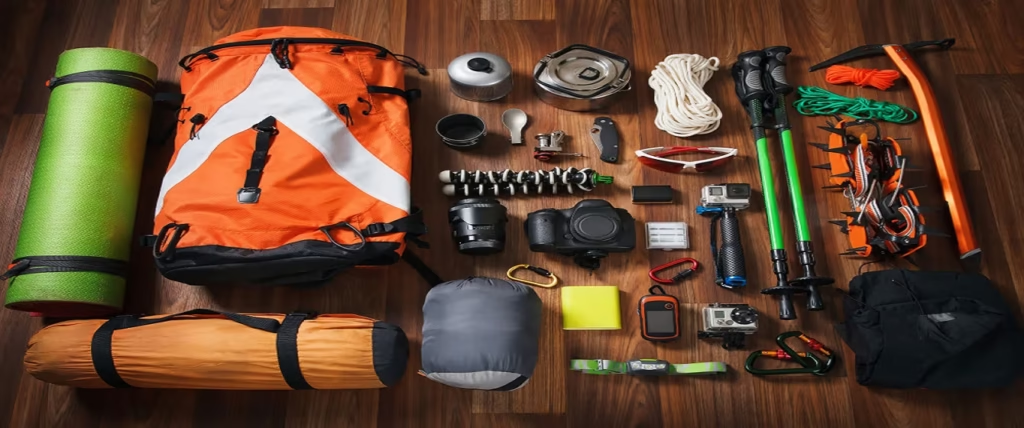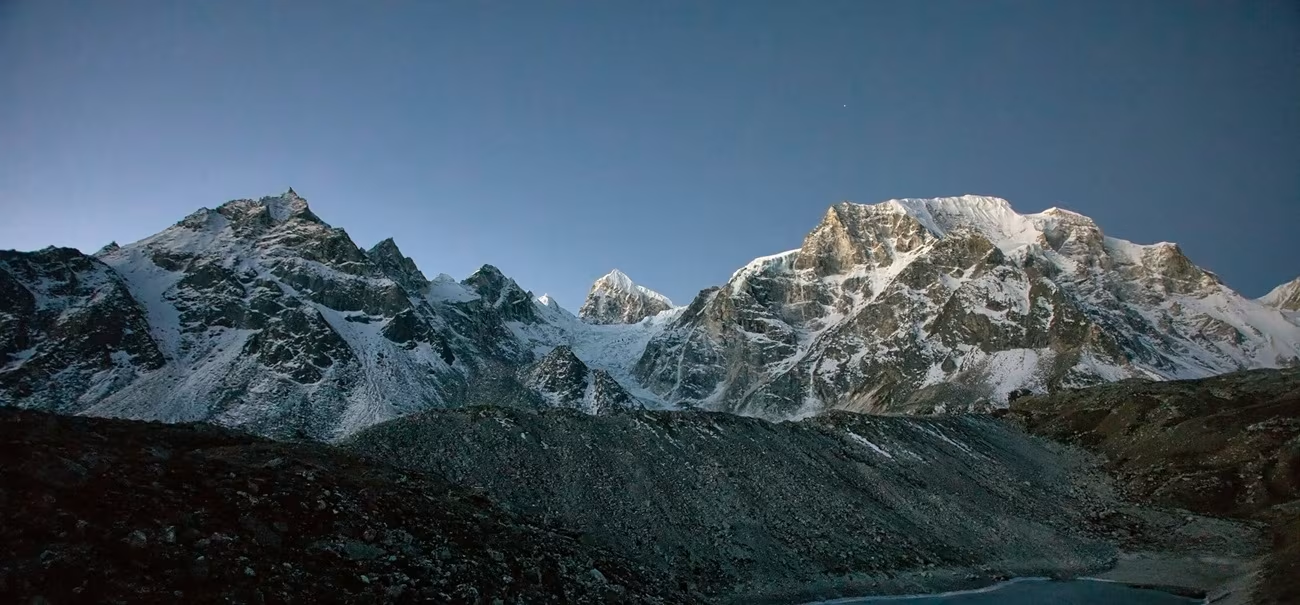Manaslu Expedition Weather Condition
Preparing to climb a high peak like Manaslu means getting your body, mind, and emotions ready. But there’s another key part—understanding the Manaslu expedition weather condition before your climb is really important for your safety and success.
Manaslu stands at a height of 8,163 meters (26,781 feet) in the Himalayas of Nepal. It’s the eighth highest mountain in the world. Even though it’s often called the ‘easiest’ 8,000-meter peak, it still has its own tough challenges, especially with weather that can change without warning.
Before beginning your climb on Manaslu, it is very important to be prepared for extremely cold and changing temperatures. You will experience extremely cold nights and sudden storms. Even the most experienced climbers can find themselves struggling with the weather.
This guide will encompass the different seasonal changes during the Manaslu Expedition weather. It will go on to talk about the highs and lows in temperature as well as the most important survival tips.
These will be invaluable advice to keep you going even in the most difficult periods of Manaslu. You’ll stand a great chance of successfully reaching the top by understanding what to expect and being prepared for it!
Manaslu Expedition Weather Condition
Manaslu Expedition Weather During Summer
Nepal experiences its hottest weather of the year from June to August when compared to other annual seasons. The summer environmental conditions in Nepal include monsoonal systems that create thunderstorms and rainfall.
The Terai region, along with the hilly area, experiences a hot climate, yet the Himalayan region maintains temperate conditions, leading to moderate weather in the Manaslu area. Daily rain and storm conditions must be expected no matter what time of day you visit this place.
The heat levels surpass those of other months at this time. The summer rains of Nepal’s monsoon period will bring precipitation while some of this rainfall will transform into snow at elevated mountain heights.
Throughout daytime hours in the Manaslu region, the typical weather pattern shows temperatures ranging from 8°C to 22°C. The temperature conditions you will experience during the Manaslu Expedition match the range mentioned previously.
Manaslu Expedition Weather During Winter
The winter period from December through February brings extremely cold conditions with gusty winds throughout Nepal. The pervasive cold finds its manifestation throughout the region, yet snow accumulates mainly at elevated heights where decreased visibility occurs frequently.
The expedition route of the Manaslu Expedition leads climbers to an altitude of 8,163 meters above sea level; thus, we need to inform you that weather conditions are extremely challenging in this area. The lower areas of Manaslu measure 7 Degrees Celsius, but the upper areas experience extremely cold temperatures.
The region experiences temperatures ranging between -10℃ to -18 ℃ during the winter season before dipping below the lowest marks overnight. The area experiences extremely heavy snowstorms and this causes both the air to become thin and oxygen levels to decrease. You should create a plan ahead of time when traveling to the Manaslu region during winter.
Manaslu Expedition Weather During Spring
The spring season extends between March and May when the region experiences cold temperatures that alternate with periodic high-altitude snowfall.
During the Springtime of the Manaslu Expedition, you will see identical patterns of weather and temperature conditions. The weather presents a clear sky that contains few clouds as temperatures remain lower than summer conditions.
Throughout Spring in the Manaslu region, temperatures range from -6 °C to 10°C. The daytime reaches ten degrees Celsius, but nighttime brings harsh temperatures below freezing levels.
Freezing conditions develop when the thermometer reaches a point below -4 to -6 degrees Celsius. Even during the nighttime periods you must plan your sleep arrangements together with appropriate clothing.
Manaslu Expedition Weather During Autumn
The Manaslu region experiences mild autumn temperatures from September to November. The weather in autumn matches the climate of spring, but snow can still occur at mountain heights.
Autumn in the Manaslu region brings temperatures that range from 7 Degrees Celsius to 20 Degrees Celsius. Your experience in the high altitudes will include cool temperatures, while the lower elevations have hotter conditions.
Nighttime precautions are necessary during every season because the chilly winds make temperatures reach freezing point. Heavy and thick snow formation happens at elevated heights because of similar conditions.
Factors Affecting Weather And Temperature During Manaslu Expedition
The weather conditions and temperature patterns on the Manaslu Expedition change significantly based on which season and what height climbers reach.
Weather at lower elevations, which are below 4,000 meters, spans from 10-30°C, but temperatures in higher elevations between 4,000 and 8,000 meters fall between -20 and 0°C.
The temperatures on Manaslu are affected not only by the altitude but also by weather patterns, wind direction and speed, and the presence or absence of clouds. The weather conditions in Manaslu include both rainy periods and snowfall, as well as hailstorms, fog, and persistent high winds.
Preparation For Extreme Weather During Manaslu Expedition
Climbers must prepare themselves against every possible weather condition when attempting to climb Manaslu. Your preparations for climbing Manaslu should include advanced research of typical seasonal weather patterns as well as the acquisition of proper clothing and gear suitable for all weather conditions.

Weather protection at Manaslu depends primarily on the correct application of layered clothing. To resist cold and moisture effectively, you should buy multiple pieces of quality water-resistant outerwear, waterproof pants and boots, insulating thermal wear, base layers, protective hats and gloves.
Wear clothing materials that let sweat and moisture escape through their fabric so your body temperature stays regulated.
A waterproof poncho or jacket should be worn on top to shield yourself from wind, snow, and rain. To stay warm and safeguard from environmental conditions, wear a suitable hat and gloves.
A reliable sleeping bag should always accompany the safety kit. You risk unsafe sleep during cold nighttime unless you possess an appropriate sleeping bag. The duration of high altitude exposure risks causing altitude sickness and hence requires you to carry a safety kit at all times.
Manaslu Expedition Weather Condition Challenges
Weather and temperature conditions on the Manaslu Expedition affect both your project performance together with your health status. Weather dangers, which include high winds and snow storms along with hail and heavy fog, turn the Manaslu climbing expedition into a formidable challenge.
An altitude of more than 8000 meters creates a space where you face higher chances of developing altitude sickness along with HACE and HAPE conditions.

Climbers need to have preparedness for any situation while holding knowledge about adapting their plans to protect their safety. Weather conditions requiring adjustments to your plans will be needed when you encounter them while climbing Manaslu.
Before ascending, check weather reports because this information enables you to create safety plans and stay protected throughout your climb.
The heavy snowfalls in specific seasons make Manaslu vulnerable to dangerous avalanches. You must understand the avalanche dangers on a climb since learning proper safety measures will help you survive an encounter with an avalanche.
Conclusion
A climber’s success or failure on the Manaslu Expedition primarily relies on weather and temperature conditions; thus, they should receive the highest priority.
Before attempting Manaslu you need to prepare your plan against every type of climatic circumstance while keeping in mind alternative steps if severe weather interferes with your expedition. The correct strategy for any weather condition on Manaslu is layering.
Purchasing high-end waterproof equipment leads to effective climate protection for climbers who wish to remain dry and warm during their mountaineering activities.
Prepare your actions in advance by monitoring weather forecasts because weather extremes will need specific preparations during your climbing session. Additional weather and temperature information about the Manaslu Expedition can be found in the Nepal Tourism Board’s notice.
Every weather pattern and climatic condition requires comprehensive preparation to succeed in the climb of Manaslu. Researching in advance will ensure your readiness to handle any obstacles that appear during your journey.

